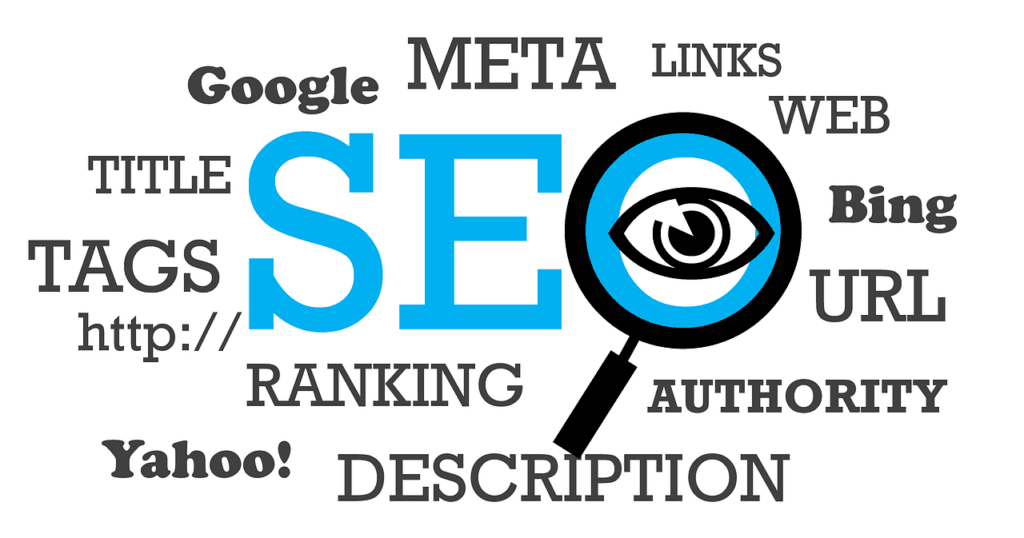This Article has been revised, edited and added to, by Poulomi Chakraborty.
- Comparing Local SEO Strategies for Banks and Credit Unions
- Google My Business Optimization
- Setting Up and Verifying Your GMB Profile
- Ensuring Accurate and Consistent Information
- Adding High-Quality Photos
- Managing Reviews and Responding to Feedback
- Utilizing GMB Posts and Updates
- Analyzing GMB Insights
- Utilizing Google Maps and Local Search Features
- Leveraging Attributes and Services
- Monitoring and Updating Your Profile Regularly
- Creating Localized Content
- Building Local Citations
- Leveraging Social Media for Local SEO
- Utilizing Local Reviews and Testimonials
- Conclusion
Local SEO (Search Engine Optimization) is crucial for banks and credit unions looking to attract more customers from their local communities. Unlike general SEO, which aims to improve search engine rankings on a national or global scale, local SEO focuses on enhancing visibility in specific geographic areas. This is particularly important for financial institutions that rely on local clients for a significant portion of their business.
In this article, we’ll explore the best practices for local SEO tailored specifically for banks and credit unions. From optimizing your Google My Business profile to creating localized content, these strategies will help you improve your online presence and attract more customers from your local area.
Comparing Local SEO Strategies for Banks and Credit Unions

Banks and credit unions, while both financial institutions, have distinct operational models and target audiences. Understanding these differences is key to developing effective local SEO strategies.
Understanding the Audience
Banks typically serve a broader audience, offering a wide range of financial products and services to individuals and businesses. They often have multiple branches in various locations, making it essential to optimize each branch’s online presence to attract local customers.
On the other hand, credit unions are member-focused and often serve specific communities or groups, such as employees of a particular company or residents of a specific area. Their marketing efforts are usually more localized, focusing on building strong relationships within their communities.
Google My Business Optimization
For both banks and credit unions, optimizing Google My Business (GMB) profiles is a fundamental aspect of local SEO. However, the approach may differ slightly based on their audience and operational model.
For banks with multiple branches, it’s crucial to create and optimize individual GMB profiles for each location. This includes ensuring that each profile has accurate and consistent information, such as the address, phone number, and business hours.
Adding high-quality images, responding to reviews, and regularly updating the profile can also improve visibility and engagement.
Credit unions, which may have fewer branches, should focus on highlighting their community involvement and member benefits in their GMB profiles. Including photos of community events, member testimonials, and information about special offers or services can help attract local customers.
Localized Content Creation
Creating localized content is another essential local SEO strategy. This involves producing content that is relevant to the local community and addresses their specific needs and interests.
For banks, this might include blog posts about financial planning for local businesses, guides on navigating the local real estate market, or updates on local economic trends. By addressing topics that are important to the local community, banks can position themselves as trusted advisors and attract more local traffic to their website.
Credit unions can benefit from creating content that emphasizes their community focus and member-centric approach. This could include articles about community events, profiles of local businesses or members, and tips for managing finances specific to the local area.
Highlighting the unique benefits of membership and the credit union’s role in the community can help attract new members and retain existing ones.
Local Link Building
Link building is a critical component of SEO, and local link building can significantly enhance a financial institution’s local search visibility. Both banks and credit unions should focus on building relationships with local businesses, organizations, and media to earn high-quality backlinks.
For banks, this might involve sponsoring local events, partnering with local businesses for co-marketing opportunities, or being featured in local news articles. These activities not only generate valuable backlinks but also increase the bank’s visibility within the community.
Credit unions, with their strong community ties, can leverage relationships with local non-profits, schools, and community groups to earn backlinks. Participating in community service projects, offering financial education workshops, and collaborating with local organizations can provide opportunities for earning backlinks while reinforcing the credit union’s commitment to the community.
Comparing the Effectiveness of Strategies
When comparing the effectiveness of these local SEO strategies, it’s important to consider the specific goals and audience of each institution. Banks, with their broader audience and multiple locations, may benefit more from extensive GMB optimization and localized content that addresses a wide range of financial topics.
Credit unions, with their community-focused model, may see more success with content that highlights their involvement in the community and the unique benefits of membership. Local link building through partnerships with community organizations can also be particularly effective for credit unions.
Overall, while the core principles of local SEO apply to both banks and credit unions, the specific tactics and focus areas may vary. Understanding these differences and tailoring strategies accordingly can help each type of institution maximize their local SEO efforts and attract more customers from their local communities.
Google My Business Optimization

Optimizing your Google My Business (GMB) profile is one of the most critical steps in local SEO for banks and credit unions. A well-optimized GMB profile can significantly improve your local search visibility, helping potential customers find your branches more easily.
Setting Up and Verifying Your GMB Profile
The first step in optimizing your GMB profile is to set it up and verify it. Make sure you claim your business if it’s already listed. Verification can be done via mail, phone, or email, depending on Google’s options for your business. This verification process confirms your business’s location and authenticity, which is crucial for search engine rankings.
Ensuring Accurate and Consistent Information
Once your GMB profile is verified, the next step is to ensure all information is accurate and consistent. This includes the business name, address, phone number (NAP), website URL, and business hours. Consistency across all online platforms is vital as it helps build trust with search engines and users.
For banks with multiple branches, it’s essential to create separate GMB profiles for each location. Each profile should have the branch-specific address, phone number, and business hours. This helps customers find the nearest branch and ensures each location ranks well in local searches.
Adding High-Quality Photos
Photos play a significant role in engaging users and improving your GMB profile’s appeal. Add high-quality photos of your bank or credit union’s exterior, interior, and staff. Photos of community events or services can also enhance your profile. Ensure these images are clear, professional, and represent your brand positively.
Managing Reviews and Responding to Feedback
Reviews are a crucial part of your GMB profile. Encourage satisfied customers to leave positive reviews and respond to all reviews promptly, whether positive or negative. Responding to reviews shows potential customers that you value feedback and are committed to providing excellent service. It also helps build trust and improve your online reputation.
Utilizing GMB Posts and Updates
Google My Business allows you to create posts and updates directly on your profile. Use this feature to share news about special promotions, community events, or new services. Regular updates keep your profile active and engaging, which can improve your local search rankings and attract more customers.
Analyzing GMB Insights
Google My Business provides insights that show how customers find and interact with your profile. Use these insights to understand what’s working and where you can improve. Look at metrics like how customers search for your business, how many views your profile gets, and what actions customers take (e.g., visiting your website or calling your business). This data can help you refine your local SEO strategy and better meet your customers’ needs.
Utilizing Google Maps and Local Search Features
Optimizing for Google Maps is another critical aspect of local SEO. Ensure your GMB profile is fully optimized so your business appears prominently in local map searches. Accurate location information and high-quality photos can enhance your presence on Google Maps.
Additionally, take advantage of other local search features like local pack results. The local pack is a set of three local business listings that appear above organic search results. Optimizing your GMB profile and gathering positive reviews can improve your chances of appearing in the local pack, driving more traffic to your website and physical locations.
Leveraging Attributes and Services
Google My Business allows you to add attributes and services to your profile. Attributes provide additional information about your business, such as whether it offers Wi-Fi, is wheelchair accessible, or has ATMs on site. Adding these details can help your profile stand out and attract more customers.
For banks and credit unions, listing specific services like mortgage consultations, financial planning, or business loans can also enhance your profile. Customers searching for these services are more likely to find your business if these details are included.
Monitoring and Updating Your Profile Regularly
Finally, regularly monitor and update your GMB profile. Ensure all information remains accurate and up-to-date. Regularly adding new photos, responding to reviews, and posting updates can keep your profile fresh and engaging.
Creating Localized Content

Creating localized content is a powerful strategy for improving your local SEO and connecting with your community. By addressing the specific needs and interests of your local audience, banks and credit unions can attract more local traffic to their websites and build stronger relationships with potential customers.
Understanding Your Local Audience
Before creating localized content, it’s crucial to understand your local audience. Research the demographics, preferences, and concerns of the people in your area. This can be done through surveys, social media insights, and community engagement. Understanding your audience’s needs will help you create content that resonates with them.
For example, a bank located in a community with many small businesses might focus on content related to small business financing, while a credit union in a residential area might emphasize home loans and personal savings tips.
Writing Localized Blog Posts
Blog posts are an excellent way to address local topics and improve your SEO. Write about subjects that are relevant to your local audience, such as financial planning for local businesses, tips for buying a home in the area, or updates on local economic trends.
For instance, you could write a blog post titled “How to Navigate the Real Estate Market in [City Name]” or “Top Financial Tips for Small Businesses in [City Name]”. These articles not only provide valuable information but also include local keywords that can improve your search engine rankings.
Showcasing Community Involvement
Banks and credit unions often play significant roles in their communities. Highlighting your community involvement can enhance your local SEO and demonstrate your commitment to the area.
Create content that showcases your participation in local events, sponsorships of community programs, and partnerships with local organizations. Share stories and photos from these events on your blog and social media channels. This type of content not only engages your audience but also generates local backlinks, which are valuable for SEO.
Featuring Local Customer Testimonials
Customer testimonials are powerful tools for building trust and credibility. Featuring testimonials from local customers can make your content more relatable and relevant.
Ask satisfied customers to share their experiences and how your services have benefited them. Use these testimonials in blog posts, on your website’s homepage, and in social media posts. Be sure to include local details, such as the customer’s location and specific services they used, to enhance the local relevance of the content.
Creating Location-Specific Landing Pages
Creating landing pages for each of your branch locations can significantly improve your local SEO. These pages should include detailed information about each location, such as the address, phone number, business hours, and services offered.
Incorporate local keywords and phrases that potential customers might use when searching for financial services in your area. For example, a landing page for your downtown branch could include terms like “bank in downtown [City Name]” or “credit union near [Neighborhood Name]”.
Using Local Keywords
Incorporating local keywords into your content is essential for improving your local search rankings. Use tools like Google Keyword Planner or Moz to find popular local search terms related to your services.
Include these keywords naturally in your blog posts, landing pages, and meta descriptions. For example, if you’re writing about mortgage options, you might use phrases like “mortgage loans in [City Name]” or “home financing in [Neighborhood Name]”. Using local keywords helps search engines understand the geographical relevance of your content, improving your chances of appearing in local search results.
Leveraging Social Media for Local Engagement
Social media is a valuable platform for engaging with your local community and sharing localized content. Regularly post updates about your services, community involvement, and local events on your social media channels.
Engage with local followers by responding to comments, sharing user-generated content, and participating in local conversations. Use local hashtags to increase the visibility of your posts and attract more local followers. For example, if you’re sponsoring a local charity run, use the event’s hashtag and the city’s name in your posts.
Providing Financial Education
Educational content can establish your bank or credit union as a trusted resource in the community. Create content that addresses common financial questions and concerns specific to your local audience.
For instance, offer guides on topics like “Understanding Property Taxes in [City Name]” or “Planning for Retirement in [State Name]”. Providing valuable, localized educational content not only helps your audience make informed financial decisions but also improves your site’s SEO by incorporating local keywords and attracting backlinks.

Building Local Citations
Local citations are mentions of your business’s name, address, and phone number (NAP) on other websites. These citations play a crucial role in local SEO by helping search engines verify the existence and location of your business. For banks and credit unions, building accurate and consistent local citations can significantly enhance local search visibility.
Ensuring NAP Consistency
Consistency is key when it comes to local citations. Ensure that your business name, address, and phone number are identical across all online platforms, including your website, Google My Business profile, social media pages, and local directories. Inconsistencies can confuse search engines and hurt your local search rankings.
Regularly audit your NAP information to ensure it remains consistent. Use tools like Moz Local or Yext to manage and monitor your citations across various directories and platforms. Consistent NAP information builds trust with search engines and improves your chances of appearing in local search results.
Submitting to Local Directories
Submitting your business information to local directories is an effective way to build citations. Start with general directories like Yelp, Yellow Pages, and Angie’s List. Then, focus on industry-specific directories such as Bankrate for financial institutions.
Local chambers of commerce and business associations are also valuable citation sources. Listing your business on these websites not only improves your local SEO but also enhances your credibility within the community.
Leveraging Industry-Specific Platforms
Banks and credit unions can benefit from being listed on industry-specific platforms. Websites that focus on financial services, such as credit union directories, banking review sites, and financial service aggregators, provide valuable citations and can drive targeted traffic to your site.
Ensure your listings on these platforms are complete and accurate. Include detailed descriptions of your services, high-quality images, and links to your website and social media pages. Engaging and informative listings can attract more visitors and improve your local SEO.
Encouraging Online Reviews
Online reviews are a powerful form of citation that can boost your local SEO. Encourage satisfied customers to leave positive reviews on platforms like Google, Yelp, and Facebook. Reviews not only enhance your online reputation but also signal to search engines that your business is credible and trustworthy.
Implement a strategy for requesting reviews from customers. This could involve sending follow-up emails after a service is provided, including review links on your website and receipts, or verbally asking for reviews during in-person interactions. Be sure to respond to all reviews, thanking customers for positive feedback and addressing any concerns raised in negative reviews.
Partnering with Local Businesses
Partnering with local businesses can generate valuable citations and backlinks. Collaborate with local businesses on co-marketing initiatives, such as joint promotions, community events, or charity drives. These partnerships can lead to mentions and links on each other’s websites, enhancing your local SEO.
For example, a bank could partner with a local real estate agency to offer homebuying seminars, while a credit union might collaborate with local schools to provide financial literacy programs. These partnerships not only generate citations but also strengthen your ties to the community and increase your visibility.
Utilizing Local News and Media
Local news outlets and media websites are excellent sources of citations. Engage with local journalists and bloggers to get coverage for your business. This could involve press releases for new services, community involvement, or noteworthy achievements.
Participating in local events or sponsoring community initiatives can also attract media attention. When local news websites mention your business, these citations and backlinks boost your local SEO and increase your online visibility.
Monitoring and Managing Citations
Regularly monitor your citations to ensure they remain accurate and consistent. Use tools like Moz Local, Whitespark, or BrightLocal to track your citations and identify any inconsistencies. Correct any discrepancies promptly to maintain trust with search engines and improve your local search rankings.
Managing your citations is an ongoing process. As your business grows and changes, ensure your online information reflects these updates. This continuous effort will help maintain a strong local SEO presence and attract more local customers.
Leveraging Social Media for Local SEO

Social media is a powerful tool for enhancing your local SEO efforts. For banks and credit unions, a strong social media presence can increase community engagement, drive traffic to your website, and improve your local search visibility.
Choosing the Right Platforms
Start by identifying which social media platforms are most popular with your local audience. Facebook, Twitter, LinkedIn, and Instagram are common choices for financial institutions. Each platform offers unique opportunities to engage with your audience and promote your services.
For example, Facebook is ideal for sharing community news, event updates, and customer testimonials. LinkedIn can be used to connect with local businesses and professionals, while Instagram is great for showcasing your community involvement through photos and videos.
Creating Engaging Local Content
Tailoring your social media content to your local audience is key. Share posts about local events, community initiatives, and financial tips relevant to your area. Highlight your involvement in local activities, such as sponsoring community events, participating in charity drives, or hosting financial literacy workshops.
Visual content tends to perform well on social media. Post photos and videos of your branches, staff, and community events. Use local landmarks and recognizable settings to make your content more relatable and engaging for your local audience.
Using Local Hashtags
Incorporating local hashtags into your social media posts can increase your visibility among local users. Research popular local hashtags related to your city, neighborhood, or community events. Use these hashtags in your posts to reach a broader local audience and improve your chances of being discovered by potential customers in your area.
For instance, if your bank is located in Chicago, using hashtags like #ChicagoFinance, #ChicagoCommunity, or #ChiTownEvents can help attract local followers who are interested in financial services and community activities.
Engaging with Local Followers
Engagement is a critical aspect of social media. Respond to comments, messages, and reviews promptly to show that you value customer feedback and are attentive to their needs. Engaging with your followers builds trust and strengthens your relationship with the community.
Host social media contests or giveaways that encourage local participation. For example, you could run a photo contest where customers share pictures of their favorite local spots, with the winner receiving a gift card or a discount on your services. These activities not only increase engagement but also promote your brand within the community.
Sharing User-Generated Content
User-generated content (UGC) is an effective way to build trust and engage your audience. Encourage customers to share their experiences with your bank or credit union on social media. Repost their photos, testimonials, and stories on your profiles, giving credit to the original posters.
UGC not only provides authentic content that resonates with potential customers but also demonstrates that you value and appreciate your community’s support. Highlighting positive customer experiences can enhance your reputation and attract more local clients.
Collaborating with Local Influencers
Partnering with local influencers can amplify your reach and improve your local SEO. Identify influencers in your community who align with your brand values and have a substantial following. Collaborate with them on content that promotes your services and highlights your community involvement.
For example, you could work with a local financial blogger to create educational content about saving and investing, or partner with a community leader to promote an upcoming event. These collaborations can generate valuable backlinks, social media mentions, and increased visibility among your target audience.
Monitoring Social Media Performance
Regularly monitor your social media performance to understand what content resonates with your audience and how it impacts your local SEO. Use analytics tools provided by each platform, such as Facebook Insights or Twitter Analytics, to track engagement metrics, follower growth, and post reach.
Analyze which types of posts receive the most engagement and adjust your strategy accordingly. For instance, if posts about local events generate more interactions, consider increasing the frequency of such content. Continuous monitoring and adjustment ensure that your social media efforts effectively support your local SEO goals.
Integrating Social Media with Your Website
Ensure your social media profiles are easily accessible from your website. Add social media icons to your homepage, contact page, and blog posts. Encourage website visitors to follow your social media accounts for updates and exclusive content.
Embed social media feeds on your website to showcase your latest posts and community involvement. This integration not only enhances user experience but also signals to search engines that your business is active and engaged with the local community, positively impacting your local SEO.
Utilizing Local Reviews and Testimonials

Reviews and testimonials are powerful tools for enhancing local SEO and building trust with potential customers. For banks and credit unions, encouraging and managing reviews can significantly impact your online reputation and search engine rankings.
Encouraging Customer Reviews
Encouraging satisfied customers to leave reviews on platforms like Google, Yelp, and Facebook can boost your local SEO. Start by asking customers directly for reviews during interactions, whether in person, over the phone, or through email.
Provide clear instructions on how to leave a review and make the process as simple as possible. You could include a link to your review page in follow-up emails or on your website. Offering a small incentive, such as a discount or entry into a prize draw, can also motivate customers to share their experiences.
Responding to Reviews
Responding to reviews, both positive and negative, is crucial. Thank customers for positive feedback and address any concerns raised in negative reviews. A thoughtful response shows that you value customer feedback and are committed to improving your services.
For negative reviews, offer solutions and invite the customer to discuss the issue further offline. This not only helps resolve the issue but also demonstrates to other potential customers that you take feedback seriously and are proactive in addressing problems.
Showcasing Testimonials on Your Website
Featuring customer testimonials on your website can enhance your credibility and provide social proof to potential customers. Select testimonials that highlight positive experiences and specific benefits of your services.
Create a dedicated testimonials page or integrate quotes into relevant pages, such as your homepage or service pages. Including photos of the customers (with their permission) can make the testimonials more relatable and trustworthy.
Using Reviews for Local Keywords
Incorporate local keywords into your responses to reviews and testimonials. This practice can enhance your local SEO by signaling to search engines the geographical relevance of your business.
For example, if a customer praises your mortgage services, respond with something like, “We’re glad you found our mortgage services helpful. Serving the [City Name] community is our top priority.” This not only acknowledges the customer’s feedback but also reinforces your local presence.
Leveraging Third-Party Review Sites
In addition to Google and Yelp, there are industry-specific review sites that can enhance your local SEO. Sites like Trustpilot, Better Business Bureau (BBB), and industry-specific forums can provide valuable citations and backlinks.
Ensure your profiles on these sites are complete and accurate. Encourage satisfied customers to leave reviews on these platforms as well, and actively manage and respond to feedback.
Highlighting Reviews in Marketing Materials
Use positive reviews and testimonials in your marketing materials to build trust with potential customers. Incorporate quotes into your brochures, advertisements, and social media posts. Highlighting customer satisfaction can enhance your credibility and attract more local clients.
For example, you could feature a testimonial in a Facebook ad campaign, showcasing how a customer benefited from your loan services. This not only promotes your services but also provides social proof to potential customers who may be considering your institution.
Monitoring Review Platforms
Regularly monitor review platforms to stay on top of new feedback and address it promptly. Use tools like Google Alerts, Mention, or ReviewTrackers to receive notifications when new reviews are posted.
Keeping an eye on reviews helps you maintain a positive online reputation and quickly address any issues that arise. It also provides insights into what customers appreciate and areas where you can improve.
Using Reviews to Improve Services
Customer reviews provide valuable feedback that can help you improve your services. Analyze recurring themes in the feedback to identify strengths and areas for improvement.
For example, if multiple reviews mention long wait times, consider implementing strategies to streamline your services. If customers frequently praise your friendly staff, emphasize this strength in your marketing efforts.
Using reviews to inform your business decisions not only improves customer satisfaction but also enhances your reputation and local SEO.
Building a Review Strategy
Develop a comprehensive strategy for managing and leveraging customer reviews. Set goals for the number of reviews you aim to receive each month and track your progress. Train your staff to ask for reviews during customer interactions and provide them with scripts or talking points.
Regularly review and update your strategy based on the feedback you receive and the impact on your local SEO. A proactive approach to managing reviews can significantly enhance your online reputation and attract more local customers.
Conclusion
Implementing local SEO best practices is essential for banks and credit unions to attract and retain customers in their communities. By optimizing Google My Business profiles, creating localized content, building consistent local citations, engaging with social media, and managing customer reviews, financial institutions can significantly improve their local search visibility.
These strategies help to connect with local audiences, build trust, and establish a strong online presence. Regularly monitoring and updating these efforts ensures ongoing relevance and effectiveness. By focusing on these actionable and tactical steps, banks and credit unions can enhance their local SEO and drive more local traffic to their branches and websites, ultimately fostering growth and customer loyalty.
READ NEXT:
- How to Effectively Protect Your Startup from Hackers and Digital Threats
- Leveraging Financial News for SEO
- E-commerce SEO: The Complete Guide
- Mobile-Friendly Pop-Ups and On-Page SEO Impact
- Keyword Research for SaaS: Identifying Industry-Specific Terms
.





















Comments are closed.